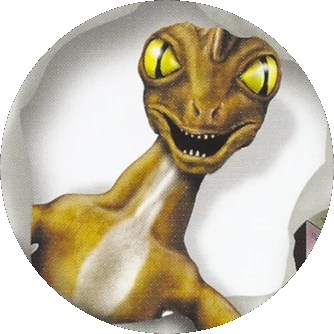The bombardier beetle looks like an easy target to many predators, but any threat to this insect can trigger a butt-bomb counter attack. If in trouble, the beetle fires a super-hot corrosive chemical from its rear in rapid fire that can burn skin and blind enemies. The beetle uses this chemical warfare only for defense. When on the hunt, it uses super-sharp jaws to slice up worms and insects.
Jawbreaker: It may not look like one, but the bombardier beetle is a voracious predator, using two razor sharp jaws to slice into insects and worms. Two or three bites usually weaken a victim enough for the beetle to begin eating.
Heave Ho! Once the beetle has bitten into a victim a few times, it vomits digestive juices into their wounds. This finishes the kill and softens the prey's innards so the bombardier beetle can slurp up a juicy meal.
Chemical Warfare[]

This beetle quartet could unleash a massive chemical attack.
While the bombardier beetle is off hunting, there are dozens of predators out there hunting the beetle. This insect has developed a complex and effective way of keeping enemies, even very large ones, off its back. Special glands in the beetle's rear produce chemicals that, when mixed, explode in a superheated spray of acid that can burn and even blind enemies. The spray can reach temperatures of 212°F-the same as boiling water. The beetle can aim this spray in any direction, and can let off up to 80 bursts in a four-minute period.
Hardcover: With such a strong defense, the bombardier beetle never needs to fly away from danger. In fact, the creature's wingcases have fused together to create a solid plate of armor on its back.
Butt Press: At least one creature in the wild has learned how to work around the bombardier beetle's steamy spray. The grasshopper mouse jams the beetle's rear end into the ground so the spray won't burn it.
Chemical Blast[]
- Special cells (a) in the beetle's rear produce the chemicals hydroquinone and hydrogen peroxide. The chemicals mix and are stored in the back chambers (b).
- When the beetle is alarmed, the chemicals squirt into the front chambers (c), where they mix with another chemical, peroxidose, which causes the explosion.
- By bending its rear end, the bombardier beetle can aim the blast in any direction where a threat is located. The heated chemicals scare off most hungry predators.
Trading Card[]
Trivia[]
- In 'Chemical Blast', 'peroxidase' is spelled 'peroxidose'.
